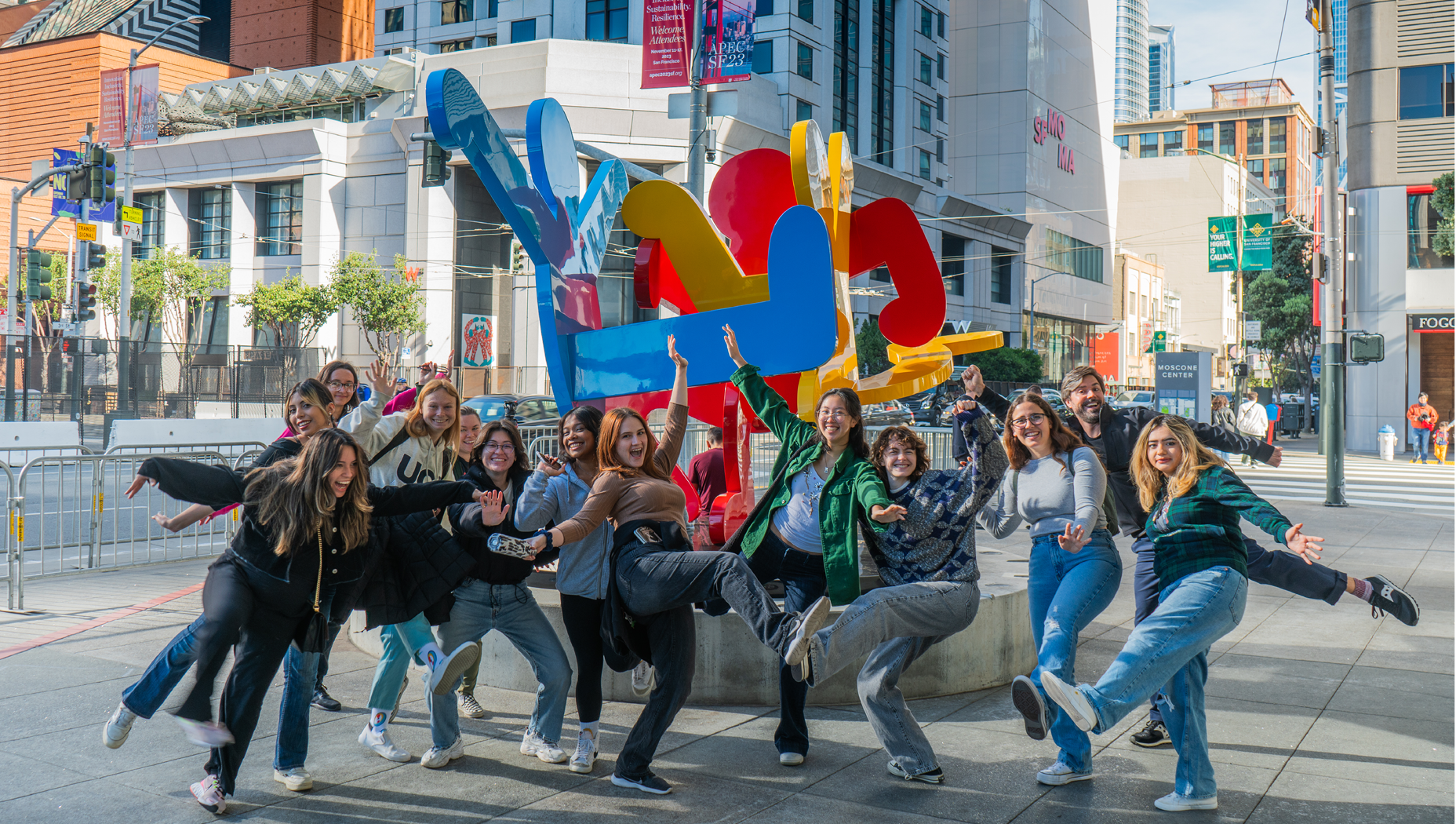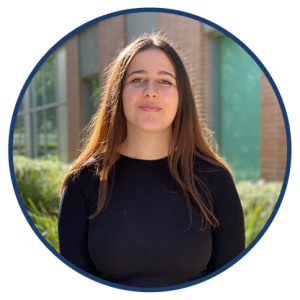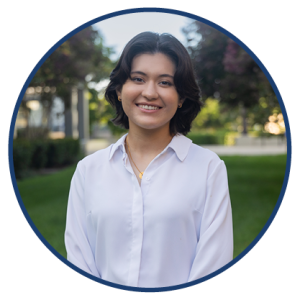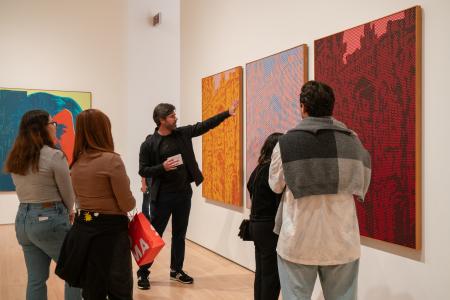
By Nikki Babri
UC Irvine’s Department of Art History is broadening educational horizons through an immersive approach that takes students to Las Vegas, the San Francisco Bay Area, Utah, Salem, Tokyo and, in the next year, Florence and Martinique. For humanities students, unraveling the intricacies of the human condition demands more than textbook and image projections – it necessitates direct engagement and active exploration.
Thanks to a generous series of donations from the Steckler family, the art history department has invested in expanding a department internship program and introducing experiential learning trips to students. The fully funded experiential learning program, which took its first departmental field trip in fall 2018 traveling 1,900 miles across the Southwest, has become a key fixture of the major.
Although typically reserved for advanced seminar classes, the experiential learning trip has become an essential part of the Art History Social Hour. Offered in fall quarter, the social hour is a one hour, once-a-week session designed for new art history majors at UCI, including first-year students, students who change their major or add art history as a double major and transfer students. Beyond its academic role, the course serves various purposes. It fosters connections among majors, facilitates one-on-one interactions with faculty, supports first-gen initiatives and addresses student concerns. The experiential trips are integral components of a broader initiative aimed at building a tight-knit, supportive community within the department.
Discovering art in the SF Bay

Over this past Veterans Day weekend, James Nisbet, chair and associate professor of art history and visual studies, led students from the Art History Social Hour on a trip to San Francisco. Arriving in San Jose with a packed itinerary, the group took a train to Palo Alto, where they received a guided tour of the Cantor Arts Center at Stanford University from visual studies Ph.D. alumna Maggie Dethloff ‘19. Now the assistant curator of photography and new media, Dethloff introduced students to her recent exhibition of Latin American photography. Students also viewed the Anderson Collection at Stanford, which features works by past UCI art instructors like Larry Bell and Robert Irwin. But then they were off again, this time to San Francisco to visit the Asian Art Museum and attend a Takashi Murakami exhibition.
The following day, the group initially planned to visit the San Francisco Museum of Modern Art (SFMOMA) then head elsewhere, but their enthusiasm for SFMOMA led them to change course after a few hours. Instead, they spent the entire day there, from open to close, a decision embraced by both students and Nisbet. Even for a professional art historian, it was the first time Nisbet had spent an entire day at a museum.

This left a lasting impression on Gasia Karakesis, a transfer student majoring in art history and art, who shared it was her favorite part of the trip. “I was so happy to be in a group where we were not only learning and analyzing works, but also having fun and experiencing something new together,” she shares. “Seeing the works in person for the first time was insightful and inspiring.”
Engaging with art in person adds a further tangible and experiential layer to the academic study of art history. To deepen this connection, professors take care to visit sites which include physical versions of the works studied in class. Oftentimes, students will experience radically changed perspectives on art, challenging their classroom-based opinions with one-on-one interactions. Before embarking on the trip, many students were not enthused to see “Lucifer,” a Jackson Pollock painting featured in another course Nisbet is teaching this fall. However, upon their seeing it in the Anderson collection, Nisbet recalls, the students changed their view. What didn’t seem impressive in class became remarkable in person. “I can discuss size and scale endlessly, debating whether something is too big or small. However, seeing it in person offers a different level of understanding,” says Nisbet.

For Myra McCants, a third-year art history and biological sciences student, the trip was especially meaningful. “My first time going to SFMOMA was with my dad, right before I started my first year at UCI as a biological sciences major. Looking at art and visiting museums used to be just a fun hobby,” she shares. After taking her first art history class – followed by many others – McCants declared an art history minor, ultimately upgrading her minor to a double major by the end of her second year. “Going to SFMOMA with this class was a full-circle moment for me. I saw many of the same pieces that I encountered two years prior, but with greater insight and new peers who shared my passion for art.”
The objectives of each trip include gaining insights into the visual arts by exploring regional collections and grasping the importance of real-life encounters with art objects. Additionally, the trips seek to cultivate camaraderie among new majors and offer students a memorable UCI experience that expands their cultural horizons.
The department has taken students to explore site-specific outdoor artworks across the U.S. and internationally. The endowment also fosters undergraduate research by supporting research trips, such as arranging a visit to the Art Institute in Chicago for a student passionate about French Impressionism, and funding a dual internship at the Louvre Museum in Paris for a Ph.D. student and a B.A. graduate continuing into the 4+1 M.A. program.
Navigating academia and building bonds
Another highlight for Karakesis was simply being surrounded by people who shared her academic goals. “Whenever I had a question about the major, a research question or an idea, my professor and my peers gave me advice and created a welcoming environment,” she says.

According to Nisbet, this is entirely by design. He intentionally structures these trips to facilitate nested mentorship opportunities across different academic programs within the department, fostering meaningful connections between undergraduate, master's and doctoral students. This informal setting provides valuable chances for undergraduates to engage with those in the next stage of their academic journey, and for 4+1 students to better understand Ph.D. students. This dynamic, he explains, is particularly beneficial for first-generation students who may otherwise lack these firsthand resources.
In an industry that can often appear reserved for the elite or wealthy, forming these connections between students – who plan to one day be working within the same industry – is paramount to the program’s pedagogy. Even socially, students find themselves in an environment where they can comfortably open up around faculty and let their personalities shine. During a dinner gathering, Nisbet recalls how one student humorously remarked that it felt like a sleepover with all the giggling. McCants reflects on the experience, sharing that the trip brought the class together in ways that surpassed initial small talk. The night at the restaurant erupted with laughter and an impromptu birthday celebration, she recalls. "Even weeks after the trip, our conversations continued nonstop."
In terms of student interest in art history, the department is observing a positive trend, particularly among transfer students who comprise nearly half of the major. "We've been contemplating adjustments to our curriculum for several years to ensure its effectiveness for both students arriving directly from high school and transfer students," explains Nisbet. Those who have chosen to transfer to UCI instead of other Southern California UC campuses are making carefully considered decisions on how to best spend their two years in the department. UCI's department distinguishes itself through unique academic offerings and vibrant social engagement, making it stand out among other campuses in the region.
“Students who major in art history and students who take art history classes are typically students you would expect to really love art,” shares Nisbet. “And art being such a visceral, experiential, perceptual, embodied thing means that giving students the opportunity to study that work in person is all that much more exciting.”
(Images: Myra McCants)
Interested in reading more from the School of Humanities? Sign up for our monthly newsletter.
